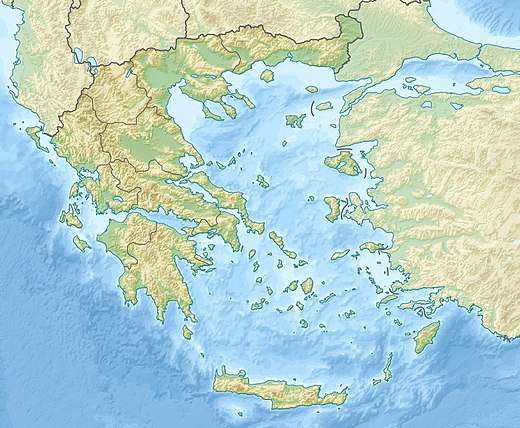Mascames
Mascames (also spelled Maskames) was a Persian official and military commander, who flourished during the reign of Xerxes I (r. 486–465).[1][2] He was the son of Megadostes, and was appointed governor of Doriscus in 480 BC by Xerxes I, succeeding the governor who had been appointed by Darius the Great (r. 522–486 BC).[3][4] According to Herodotus, Mascames resisted all Greek attacks following the Second Persian invasion of Greece, and remained thus known as the only remaining Persian governor in Europe.[4] Though the Greeks managed to clear other Persian garrisons in Europe, such as Eion, they were unable to take Doriscus from Mascames, which irked the Athenian military.[2][5]
As no one managed to dislodge him, Mascames was highly honored by Xerxes I and received annual gifts from him for his bravery.[4][2] Mascames's descendants (who succeeded him) continued to receive gifts from Xerxes I's successor, Artaxerxes I (r. 465–424 BC).[6][1]
According to Antigoni Zournatzi (2000), Mascames may have been recalled from Doriscus by ca. 465 BC.[lower-alpha 1] The Achaemenid ruler probably recalled Mascames with his garrison around that date, and finally abandoned Doriscus.[8]
Miroslav Ivanov Vasilev (2015) states that Mascames may have died by 465 BC.[lower-alpha 2]
Notes
- Zournatzi: "it is possible that Mascames was recalled by ca. 465 BC., after which our sources record no fighting between the Persians and the Delian League along the coast of Thrace (Sealey 1976, 251)".[7]
- Vasilev: "it appears that during the reign of Artaxerxes, who came to the throne in 465, Mascames was no longer alive, since, according to Herodotus, the new Persian king sent gifts to his successors".[9]
References
- Vasilev 2015, pp. 225-226.
- Waters 2014, p. 133.
- Kuhrt 2007, p. 209.
- Vasilev 2015, p. 225.
- Dandamaev 1989, p. 231.
- Kuhrt 2007, p. 290.
- Zournatzi 2000, p. 685 (note 8).
- Sealey, Raphael (1976). A History of the Greek City States, 700-338 B. C. University of California Press. p. 208. ISBN 9780520031777.
- Vasilev 2015, p. 226.
Sources
- Dandamaev, M. A. (1989). A Political History of the Achaemenid Empire. Brill. ISBN 978-9004091726.CS1 maint: ref=harv (link)
- Kuhrt, Amélie (2007). The Persian Empire: A Corpus of Sources from the Achaemenid Period. Routledge. ISBN 978-0415552790.CS1 maint: ref=harv (link)
- Vasilev, Miroslav Ivanov (2015). The Policy of Darius and Xerxes towards Thrace and Macedonia. Brill. ISBN 978-9004282155.CS1 maint: ref=harv (link)
- Waters, Matt (2014). Ancient Persia: A Concise History of the Achaemenid Empire, 550–330 BCE. Cambridge University Press. ISBN 978-1107652729.CS1 maint: ref=harv (link)
- Zournatzi, Antigoni (2000). "Inscribed Silver Vessels of the Odrysian Kings: Gifts, Tribute, and the Diffusion of the Forms of "Achaemenid" Metalware in Thrace". American Journal of Archaeology. 104 (4): 683–706. doi:10.2307/507153.CS1 maint: ref=harv (link)
